Ford Transit Transporter vs Volvo XC60 – Differences & prices compared
Compare performance, boot space, consumption and price in one view.
Find out now: which car is the better choice for you – Ford Transit Transporter or Volvo XC60?
The Ford Transit Transporter (Cargo Van) comes with a Diesel or Electric engine and Manuel or Automatic transmission. In comparison, the Volvo XC60 (SUV) features a Petrol MHEV or Plugin Hybrid engine with Automatic transmission.
When it comes to boot capacity, the Ford Transit Transporter offers , while the Volvo XC60 provides 483 L – depending on how much space you need. If you’re looking for more power, decide whether the 269 HP of the Ford Transit Transporter or the 455 HP of the Volvo XC60 suits your needs better.
In terms of consumption, the values are 21.30 kWh7.90 L per 100 km for the Ford Transit Transporter, and 2.80 L for the Volvo XC60.
Price-wise, the Ford Transit Transporter starts at 39900 £, while the Volvo XC60 is available from 49200 £. Compare all the details and find out which model fits your lifestyle best!
Ford Transit Transporter
The Ford Transit Transporter has long been a staple in the commercial vehicle sector, renowned for its reliability and versatility. It offers a comfortable cabin with a modern design that enhances the driving experience, making long journeys more enjoyable. With a focus on practicality, the Transit provides ample cargo space, meeting the demands of businesses and individual users alike.
details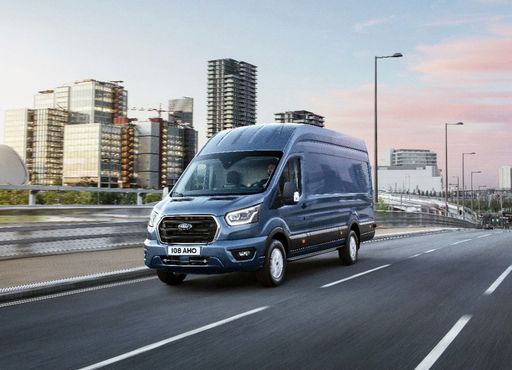 @ media.ford.com
@ media.ford.com
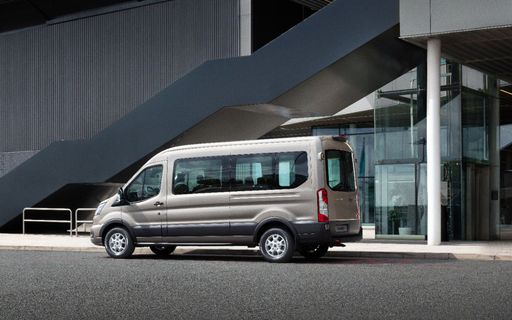 @ media.ford.com
@ media.ford.com
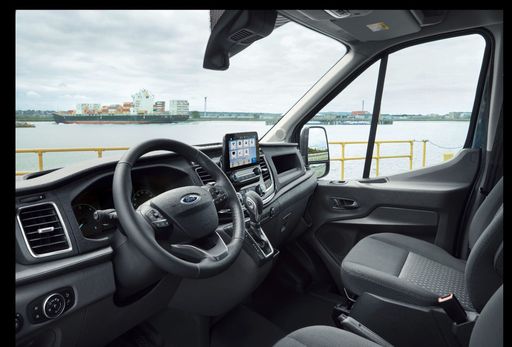 @ media.ford.com
@ media.ford.com
Volvo XC60
The Volvo XC60 strikes a perfect balance between contemporary design and practical functionality, making it an appealing choice for those in search of a reliable and stylish SUV. Its interior showcases a blend of high-quality materials and innovative technology, ensuring a comfortable and seamless driving experience. With its emphasis on safety and environmental sustainability, the XC60 continues to stand out in the competitive SUV market.
details @ media.volvocars.com
@ media.volvocars.com
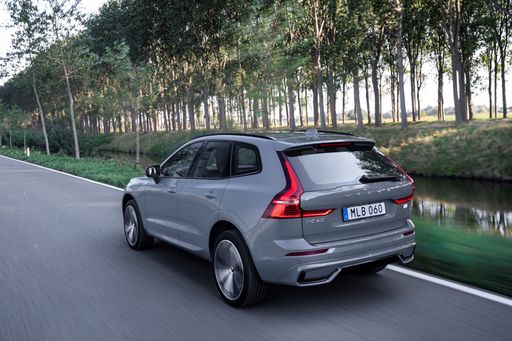 @ media.volvocars.com
@ media.volvocars.com
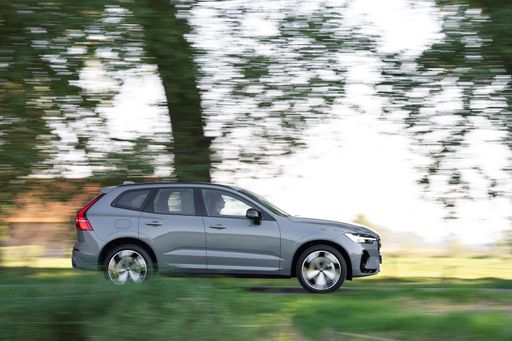 @ media.volvocars.com
@ media.volvocars.com
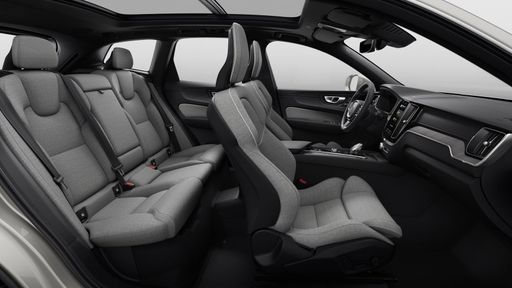 @ media.volvocars.com
@ media.volvocars.com
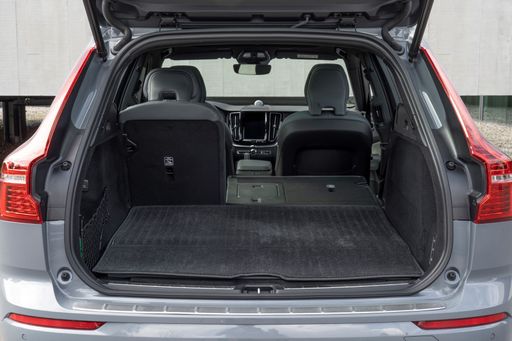 @ media.volvocars.com
@ media.volvocars.com

|

|
|
|
|
Costs and Consumption |
|
|---|---|
|
Price
39900 - 69100 £
|
Price
49200 - 75100 £
|
|
Consumption L/100km
7.9 - 10.3 L
|
Consumption L/100km
2.8 - 7.4 L
|
|
Consumption kWh/100km
21.3 - 32 kWh
|
Consumption kWh/100km
-
|
|
Electric Range
247 - 317 km
|
Electric Range
74 - 82 km
|
|
Battery Capacity
68 kWh
|
Battery Capacity
14.70 kWh
|
|
co2
0 - 270 g/km
|
co2
64 - 169 g/km
|
|
Fuel tank capacity
70 L
|
Fuel tank capacity
71 L
|
Dimensions and Body |
|
|---|---|
|
Body Type
Cargo Van
|
Body Type
SUV
|
|
Seats
3 - 6
|
Seats
5
|
|
Doors
4
|
Doors
5
|
|
Curb weight
2074 - 2765 kg
|
Curb weight
1900 - 2150 kg
|
|
Trunk capacity
-
|
Trunk capacity
468 - 483 L
|
|
Length
5531 - 6704 mm
|
Length
4688 - 4708 mm
|
|
Width
2059 mm
|
Width
1902 mm
|
|
Height
2530 - 2778 mm
|
Height
1651 - 1658 mm
|
|
Payload
735 - 2607 kg
|
Payload
510 - 550 kg
|
Engine and Performance |
|
|---|---|
|
Engine Type
Diesel, Electric
|
Engine Type
Petrol MHEV, Plugin Hybrid
|
|
Transmission
Manuel, Automatic
|
Transmission
Automatic
|
|
Transmission Detail
Manual Gearbox, Automatic Gearbox
|
Transmission Detail
Automatic Gearbox
|
|
Drive Type
Front-Wheel Drive, Rear-Wheel Drive, All-Wheel Drive
|
Drive Type
All-Wheel Drive
|
|
Power HP
105 - 269 HP
|
Power HP
250 - 455 HP
|
|
Acceleration 0-100km/h
-
|
Acceleration 0-100km/h
4.9 - 6.9 s
|
|
Max Speed
120 km/h
|
Max Speed
180 km/h
|
|
Torque
310 - 430 Nm
|
Torque
350 - 709 Nm
|
|
Number of Cylinders
4
|
Number of Cylinders
4
|
|
Power kW
77 - 198 kW
|
Power kW
184 - 335 kW
|
|
Engine capacity
1995 cm3
|
Engine capacity
1969 cm3
|
General |
|
|---|---|
|
Model Year
2019 - 2024
|
Model Year
2025
|
|
CO2 Efficiency Class
G, A
|
CO2 Efficiency Class
F, B
|
|
Brand
Ford
|
Brand
Volvo
|
Ford Transit Transporter
Discovering the Ford Transit Transporter: A Blend of Tradition and Innovation
The Ford Transit Transporter has long been a staple in the commercial vehicle market, known for its reliability and versatility. As Ford continues its innovative journey, the Transit Transporter integrates modern technology and eco-friendly advancements, making it more appealing than ever. Here, we explore some of its key technical details and innovations.
Under the Bonnet: Engine Variants and Efficiency
The Ford Transit Transporter offers a variety of engine options to cater to diverse commercial needs. Among these, the 2.0 EcoBlue Diesel engine provides a robust selection of power outputs, ranging from 105 to 165 PS. Not just limited to traditional fuel, Ford also introduces the E-Transit line with electric motors generating up to 269 PS. This transition to electric is an essential step towards sustainability, achieving an impressive range of 247 to 317 km on a full charge.
Fuel Economy and Environmental Impact
When it comes to fuel efficiency, the Transit Transporter presents a competitive edge with diesel variants consuming between 7.9 to 10.3 L/100km. On the electric side, consumption levels are measured at 21.3 to 32 kWh/100km. Furthermore, the Transit’s CO2 emissions range from zero for electric models to 270 g/km for select diesel engines, placing the vehicle in varying CO2 efficiency classes from G to A.
Performance and Driving Dynamics
Designed for optimal performance, the vehicle’s torque output ranges from 310 to 430 Nm, facilitating smooth and powerful driving experiences across various terrains. The Transit Transporter boasts a maximum speed of 120 km/h, ensuring timely commutes and deliveries, crucial for business efficacy.
The Versatility of Drivetrain Options
The Ford Transit Transporter provides an array of drivetrain configurations, including front-wheel, rear-wheel and all-wheel drive. This adaptability enables the vehicle to tackle different driving conditions with ease, offering stability and resilience no matter the challenge.
Technology and Innovation on Board
Ford’s commitment to innovation is evident within the Transit Transporter’s interior. Intuitive features such as advanced driver-assistance systems, smart connectivity tools, and ergonomic seating arrangements ensure that both driver and passengers enjoy a seamless and comfortable journey, ideal for long rides or daily routines.
Crafted for Practicality and Comfort
With length variations extending from 5531 mm to 6704 mm, and height options from 2530 mm to 2778 mm, the Ford Transit Transporter offers expansive cargo space and flexible seating arrangements. Depending on the variant, seating options range from 3 to 6 seats, catering to diverse passenger and cargo needs.
A Future-Ready, Cost-Effective Choice
Price tags for the Ford Transit Transporter range from €46,589 to €80,611, accommodating different budget requirements. With monthly operation costs calculated between €1430 and €1991, the Transit remains a financially viable option for businesses seeking reliability and efficiency.
Conclusion: An Unyielding Commitment to Excellence
The Ford Transit Transporter stands as a testament to Ford’s dedication to marrying tradition with progress. With its diverse range of powertrains, technological integrations, and practical design, it continues to lead the commercial vehicle segment, ready to meet the challenges of modern mobility and sustainability.
Volvo XC60
Introduction to the Volvo XC60
The Volvo XC60 continues to set the standard in the luxury SUV category, embodying a blend of Scandinavian design, cutting-edge technology, and robust performance. As one of Volvo's best-selling models, the XC60 delivers an exceptional driving experience characterized by its impressive powertrains and a suite of innovative features. This article delves into the technical intricacies and innovative advancements that define the Volvo XC60, highlighting why it remains a top choice for discerning drivers.
Performance and Powertrains
The Volvo XC60 offers a range of powertrains to suit diverse preferences, from the efficient mild-hybrid systems to the powerful plug-in hybrids. The mild-hybrid variants provide a balance of performance and fuel economy, generating up to 250 PS and achieving fuel consumption as low as 7.7 L/100km. Meanwhile, the plug-in hybrid models take efficiency to another level, offering up to 455 PS with remarkably low fuel consumption of just 0.9 L/100km and an electric range of up to 80 km.
Electric Innovation
Volvo’s commitment to sustainability is evident in the XC60's plug-in hybrid models, which offer a battery capacity of 14.7 kWh. This allows for significant electric-only driving, reducing emissions and providing a quieter ride. With a focus on reducing its carbon footprint, Volvo offers some versions with CO2 emissions as low as 22 g/km. The renowned Polestar Engineered package further enhances the driving dynamics, featuring sport-tuned suspension and increased power output.
Advanced Safety Features
Known for prioritising safety, Volvo integrates several advanced safety technologies into the XC60. Standard features include the City Safety suite, which incorporates collision avoidance and mitigation, along with pedestrian detection. The SUV is also equipped with Volvo's Pilot Assist system, an advanced driver assistance feature that aids steering, braking, and acceleration up to 130 km/h, ensuring a more relaxed drive on highways.
Interior Comfort and Technology
The XC60 doesn’t compromise on luxury, offering a spacious interior with high-quality materials and state-of-the-art technology. The standard Sensus infotainment system provides intuitive control over multimedia, navigation, and connected services. Features such as a panoramic sunroof and premium audio systems enhance comfort and driving pleasure, while the adaptive seats and climate control ensure a comfortable environment for all passengers.
Conclusion
The Volvo XC60 exemplifies a harmonious blend of style, technology, and sustainability. With its array of powertrains and cutting-edge features, it meets the needs of a broad range of drivers, maintaining Volvo’s reputation for safety and quality. Whether one opts for the fuel-efficient mild-hybrid or the powerful plug-in hybrid, the XC60 remains a formidable contender in the luxury SUV market, offering a driving experience that is both indulgent and responsible.
Which drive types are available for the Ford Transit Transporter?
Available as Front-Wheel Drive, Rear-Wheel Drive or All-Wheel Drive.
The prices and data displayed are estimates based on German list prices and may vary by country. This information is not legally binding.
